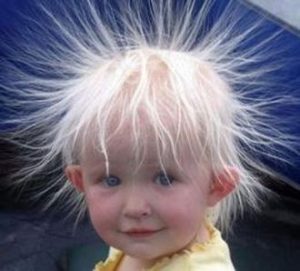Static electricity frequently happens when items rub against one another. If you were to rub a balloon against your clothes 20 or 30 times, you’ll find the balloon adheres to you. This occurs because rubbing the balloon gives it an electric charge. That charge makes it adhere to your clothing like a magnet, because your clothing gets an electrical charge too. So your clothing and also the balloon draw in each other like the opposing ends of two magnets.
Have you ever strolled across a nylon rug or carpet and then felt a slight prickling sensation? After that touched something metal, like a door handle or a faucet, and then felt a pain where you touched the object? That is an example of what an electric shock is. Your feet are rubbing on the carpet when you walk across it, building up an electric charge that may cause you to feel a prickling sensation. When your body has the charge and you touch something metal, that charge runs promptly to Earth– and that is the shock you feel.
Lightning is likewise triggered by static electricity. Rain clouds move against each other as they move through the sky. They become electrically charged when they do this. When that charge is finally big enough, it bolts to the earth in the form of lightning. You could often really feel the tingling in the air when a storm is nearby. This is the electricity in the air around you.
Electrons, the small fragments that “orbit” around the sides of atoms, are what make electricity. Each electron has a tiny negative charge. An atom generally has an equivalent variety of electrons and also protons (positively billed fragments in its center), so atoms have no overall electric charge.
By rubbing a balloon on your clothing over and over, you give that balloon energy. Using your hand, you can make the balloon move. As you rub the balloon against your clothing, some of the electrons gather on your body as they are knocked off of the rubber. This, in turn, leaves the balloon with fewer electrons. Having fewer electrons then makes the balloon positively charged a little. Your clothes, on the other hand, are a little negatively charged with the electrons from the balloon. Taking those two charges into consideration, they are attracted to one another and try to come back together.
